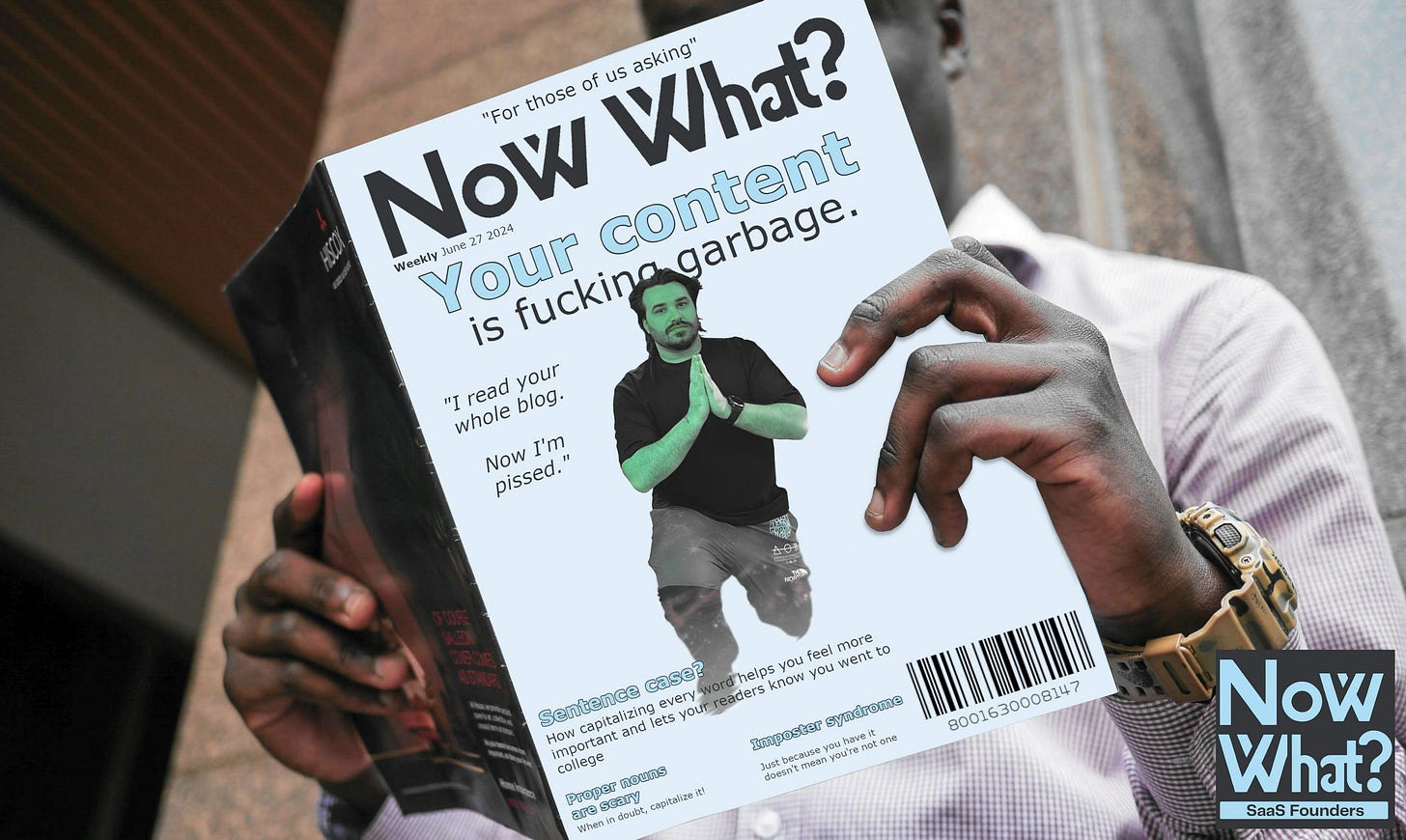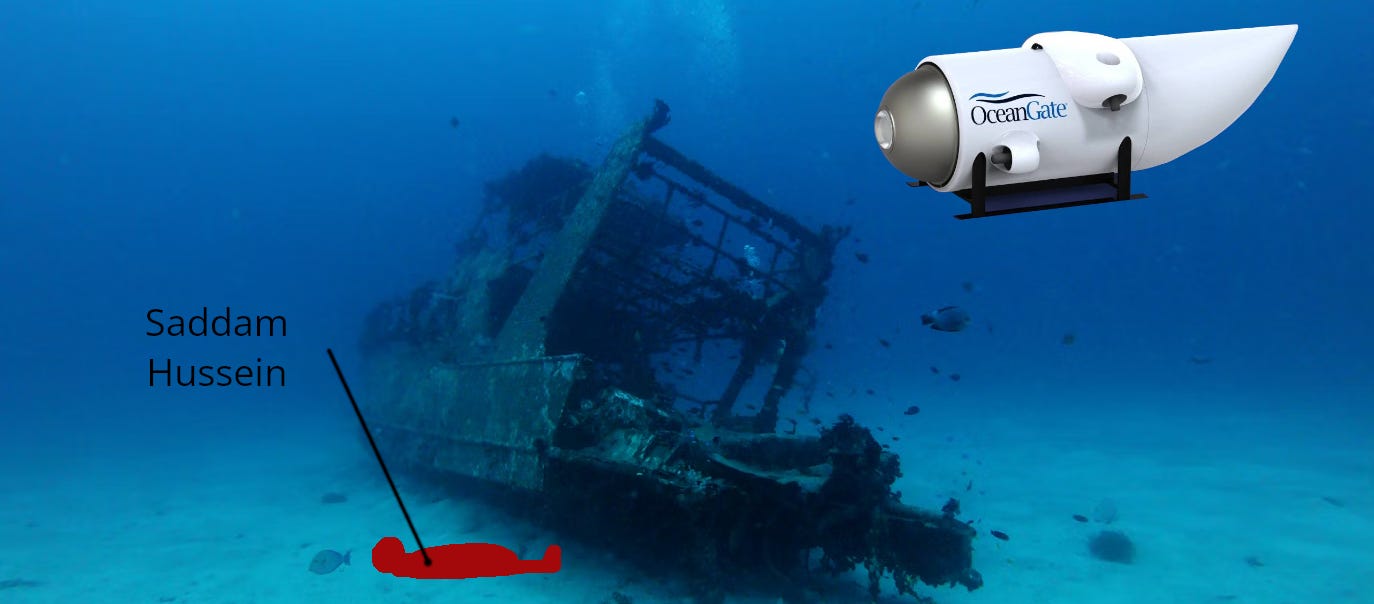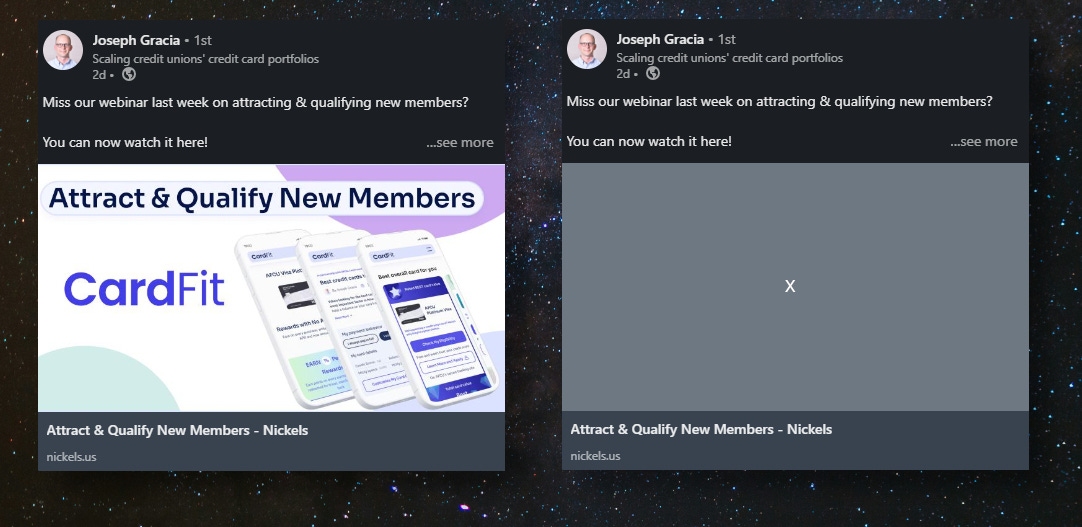How to make your top of funnel content more like a magazine
AI-assisted search and AI-assisted content are changing the game drastically and permanently.
AI-assisted search is going to change how users discover content.
More specifically, it’s going to reduce the click-through rate from search to site.
That’s not all that bad if you think about it. Do you really want to pursue a user that was only looking for an answer that can fit in a featured snippet? Obviously it’s lame not getting the click and attribution (for a whole bunch of reasons), but overall that’s not what’s going to kill your conversion rate.
AI-assisted content generation will, however, kill your conversion rate.
From our current point in time, there is only one possible ultimate outcome: An internet saturated with content created by AI.
How will businesses stand out when this day arrives? How can they get ahead of the game and set themselves up for success? Good questions—I’ll make them the answer into the next heading:
How to make your content program resemble a magazine
Look, not all magazines are created equal, and most of them aren’t even doing great right now. I’m not literally saying that you should start writing magazines, but rather that you should take inspiration from what made magazines successful.
Why were magazines compelling enough to dominate written content for decades?
Broad topics that are interesting to anybody
The Implosion of the Titan Submersible was one of Scientific American’s biggest articles recently.
It’s a good example. This is a topic that dominated mainstream news for weeks. Everyone has an opinion on it. Some people were mortified and holding prayer vigils; others thought the loss of a few billionaires in a cutting-edge submarine was poetic like an ancient Greek tragedy/comedy.
Mapping this back to B2B Saas, it’s a good idea to write articles about things that people have opinions on. Here’s an example:
At Nutshell, I was so tired about people using pipeline and funnel interchangeably. There’s also a sales funnel and a marketing funnel, and they’re both completely different. When companies don’t internally share definitions of these things, it makes it tough to build together.
I wrote an article that set the record straight, clearly defining what each of these things are. It was just an opinion I had about the industry, and the article was just that—my opinion.
Naturally, the article did pretty well organically and on social media.
If you’re a Saas founder, I’m assuming you have a ton of these opinions ready to go. If you don’t, just talk to people. If someone has a strong opinion on something timely, ask them if they’ll write a blog post for you.
Deep dives for the core audience
Following the Scientific American example, this article would be something like Edvard Schnitzel’s Discovery of a Helium-Ion Isotope on the Ceres.
It’s not a cover article that will have shoppers reaching for it in the checkout lanes at Target, but it’s a heavy hitter that the core readers of Scientific American will appreciate.
Your Saas content should follow the same framework. While the big and splashy pieces will lure readers in, those who are interested in your core product or offering will stick around—and maybe even subscribe—to get the deep coverage on topics they care about.
Compelling pictures and infographics
This is one of the original advantages that magazines had over newspapers.
Like, picture the beautiful wildlife photography of National Geographic compared with the plain blotter text of a newspaper. It’s vastly more entertaining.
Graphics and infographics take a while to produce, and you generally need a dedicated graphics designer for the latter (even if you’re scrappy).
But think about the impact. High-quality images make a huge difference when featured:
On your homepage
As Opengraph (social share) images
Atop a good blog post
Seriously, if the appeal of high-quality visuals wasn’t inherent to humans, Instagram wouldn’t exist, and not enough companies take advantage of this.
For starters, when sharing content on social media and other platforms, people are almost solely clicking on it because of its meta title, meta description, and meta image. Those three comprise your entire first impression, plus whatever you say while sharing it.
Even deeper into your written content, if readers encounter a hastily-made graphic, it psychologically creates a chink in your armor. Where they may have perceived your content as perfect in every way, a rushed graphic suggests that, hey, maybe this company isn’t as flawless as I thought.
And while this is fine for now (I make my own graphics and they’re terrible), in the future, high quality graphics will be required in order to create that seamless content experience that will keep users coming back for more.
Narrative-driven stories
“We drove across the country to help one customer out. Here’s how our trip went.”
I’ve always loved articles like this.
Generally, B2B companies refrain from publishing anything that provides a POV. I guess the longstanding reasoning is that, unless it’s something that everyone can agree upon or find value from, it doesn’t deserve to be content.
While I usually agree with this rule (because at the end of the day I’m responsible for actual metrics), nothing delights me more than reading about how Monday dotcom made a video in seven days, or seeing company employees doing real, human activities.
So, sometimes, this type of content deserves to live outside of your recruiting materials. Not only does it solidify your crew as a cool one, but there are also cool stories that can only be told by your and your employees.
Original information and studies
Most marketers know that SparkToro wasn’t even on the radar until they published an article that explained that less than half of Google searches resulted in a click.
The article wasn’t just the source of this one statistic. It also provided some methodology and a fact-based timeline of how this data was produced, why it’s reputable, and so on.
This article catapulted SparkToro’s web traffic into the stratophere, generating thousands of backlinks from reputable sites. They’re now firmly considered an authority on the subject.
Original information and studies provide two distinct benefits
They’re actually cool for your readers
They’ll make other people link to your content
The cheapest way to start publishing original insights is to anonymize and report on your own user data. If you’re Adobe, it might mean some stats about which PhotoShop features are the most popular. If you’re HubSpot, it might mean insights into email deliverability rates.
Insights, opinions, and arguments from experts with unique perspectives
These are big content pieces for traditional magazines. Usually whoever is on the cover of the magazine is going to have a big, juicy writeup somewhere within the issue.
Although not as common in the B2B tech world, interviews with experts can generate tons of interest, readership, and subscribership.
This content format differs because it’s not something AI can write. (Maybe it can transcribe, but it can’t conduct an interview with an expert.) It takes a significantly longer time to produce than say, this very article, which I can write independently in one sitting with no oversight.
Interviews with experts take time to coordinate schedules, devise interesting questions, conduct an interview, parse through notes, and craft into a piece of content that follows a narrative and doesn’t read like a random assortment of quotes.
Pro tip for marketers: Approach this content type the same way you’d approach a customer story—it just doesn’t have to be a customer!
Here are some of my favorite examples of interview-style and person-focused articles:
Content that directly addresses reader questions and opinions
This one is going to be very specific to your own company, but as a general rule, it’s good to carve out ~25-50% of your content creation capacity to directly address reader questions, perceptions, and opinions.
I’ve written before about how these topics are good for SEO purposes (your readers’ questions naturally fit your keyword profile), but there’s also value in owning the conversation and being an active contributor rather than a wave-rider.
Despite not being the one who made it up, I talk about the 3S strategy for content generation a lot. Addressing customer questions and opinions is sort of like a down-the-funnel version of topics that the 3S strategy would naturally garner for your company.
There’s more to it than just following what others have done
I’m going to keep it super real to make this next point.
One resounding complaint that I hear about in-house B2B marketing is that leadership approaches marketing in roughly the following way:
Find out what competitors are doing
Do the exact same thing they do (but better?)
Find out what worked for a “similar” company
Do the exact same thing they did (but better?)
Expressly decline to pursue anything that hasn’t been done before
Distill insights from successful yet non-marketing-friendly organizations and try to apply their marketing principles to the internal marketing department
Get frustrated when nothing happens
Assuming you’re a Saas founder, go ask your marketing friends what they’d do if they had infinite buy-in from leadership. I guarantee it’s not “use AI to satisfy headcount needs” or whatever they’re currently working on.
Seriously, I talk to marketers every day and a lot of them are discouraged.
Pursuing what will generate revenue in the long run doesn’t always generate signal in the short term, especially when it comes to creating high-quality content. The overall effect is that most marketers in the B2B space only have the creative freedom and budget to copy what their competitors are doing.
This is what’s going to lead to content no longer producing ROI in the next few years.
Your content is the coolest person at the party
When Ben Goldstein and I brought poor little Nutshell’s blog visits from 25k/mo to 100k/mo in under two years, we didn’t do it by copying our tired old competitors’ soulless content plays. We published like a magazine.
Although Nutshell got acquired by a spam agency and sucks now, it used to host a treasure trove of one-of-a-kind sales and marketing articles, garnering tens of thousands of newsletter subscribers and generating almost all the inbound revenue for the company.
Note: Nutshell’s blog generated 95% of its leads, with no outbound sales team. Nutshell truly was a content-led company until its acquisition.
Ben, my old boss, used to write for Maxim magazine and an MMA publication. His writing occupied the same page space as nudity and fights—meaning it had to be pretty damn entertaining. He made sure we all followed his lead on what “good content” looks like.
This magazine approach is also how we competed against competitors thousands of times our size with a GTM team of six. Our readers liked us because we were completely apeshit about generating good content and nothing else.
And yours will too, if you start taking content seriously.
Thanks for reading
I just wanted to say thank you to those who are still with me. Since the last time I posted, I moved to the ‘burbs and had a son! 👶
Things have been crazy but I’m back and posting again. Thanks for reading, it really means a lot!









I miss magazines ... and love this.